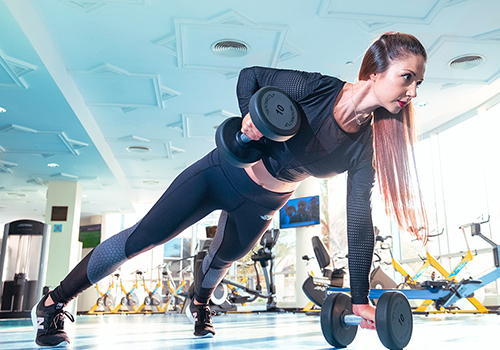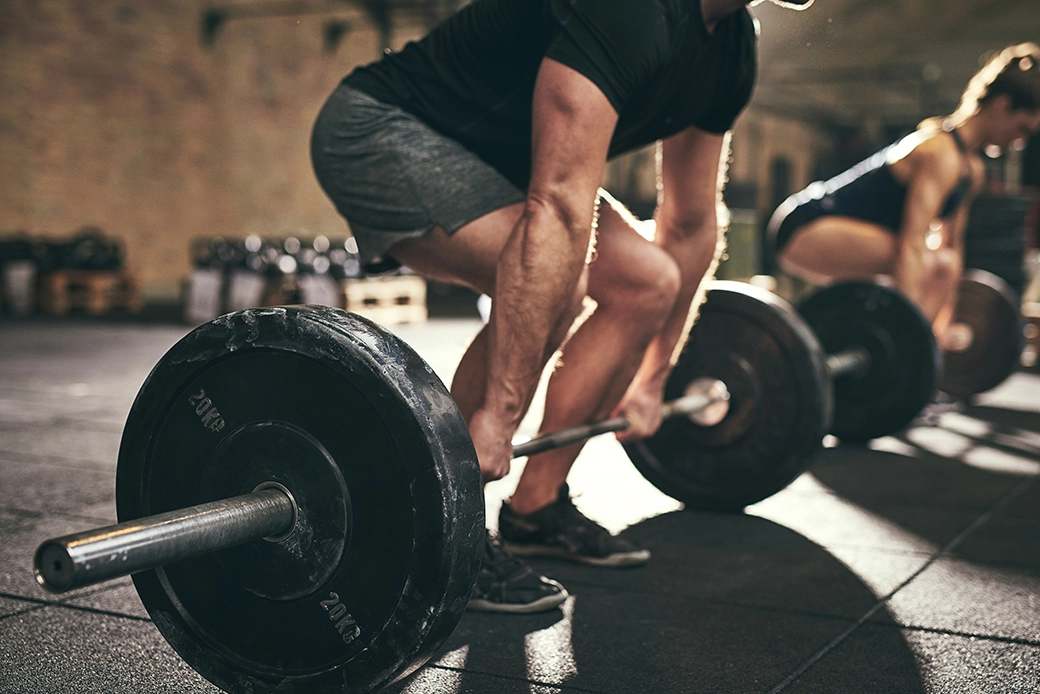People who exercise with scoliosis can worsen their condition if they do the wrong thing. To prevent that, they must avoid certain exercises.
There are a whole slew of exercises you should avoid when you have scoliosis. Generally, they tend to strain an already damaged spin. These exercises include:
- Football
- Soccer
- Rugby
- Horseback riding
- Volleyball
- And long-distance running
Other exercises worthy of caution include:
- Weightlifting
- Gymnastics
- Swimming
- And ballet
Of course, those last four have exceptions.
Let’s look into it a little more deeply.
Medical professionals, chiropractors, in particular, usually recommend exercises as an adjunct to musculoskeletal care – whether that be regular chiropractic treatments, physical therapy, or what-have-you. However, when it comes to treating scoliosis, that is not an endorsement for you to take up any and all exercises that you might want.
To be sure, a medical regimen to fix scoliosis will surely include some amount of exercise. However, the first point to stipulate is that some exercises are not recommended for scoliosis patients.
Typically, this is because the exercise in consideration is either ineffective in cases of scoliosis, or, even worse, detrimental to the scoliosis condition. That means, some types of exercise may actually exacerbate the problem and cause you pain or other issues when you take them up. And you don’t want that!
As far as why some exercises are injurious, there are several reasons. First, there are those sports and exercises that are simply one-sided. That is, the exercise or sport typically develops and works only the muscles on one side of the body. For example, consider golf. A golfer’s swing and follow through is almost always performed on the same side of the body regardless of other factors.
The same point can be made about tennis and bowling. Most people do not switch arms for either of these sports.
Another type of exercise to avoid when you have scoliosis are those that can compress and strain the spine, either through powerful impacts or just through certain types of movements. Basically, you don’t want to shock the spine nor do you wish to overextend it. Both occurrences can be particularly problematic when you have scoliosis.
There are a number of exercises, sports, and activities that can be problematic here. These include:
- Football
- Soccer
- Rugby
- Horseback riding
- Volleyball
- And long-distance running
Other activities that can also pose a similar, but not as pronounced risk, include the following:
- Weightlifting
- Gymnastics
- Swimming
- And ballet
Typically, these latter four consist of a variety of movements and exercises, some of which are injurious and some of which are not. Generally, you should use your best judgment, and avoid those exercises and movements that cause you pain. For example, where you might be able to get by unscathed with some simple light-weight weightlifting, you should be exceptionally careful and not use heavier weights. Squats, deadlifts, and other heavy-duty weightlifting exercises should be avoided.
Of course, the first thing you should do when you are considering adding any type of new exercise is speak to a medical professional (physical therapist, chiropractor, or doctor). Whether it is a sport or other type of activity, get the input of a qualified professional before adding it to your usual regimen.
The next thing to remain vigilant about is how your body responds. If you experience pain, you should stop right away. However, you should try to stay aware of the difference between soreness and pain. One is a natural occurrence from exercise or musculoskeletal treatments like chiropractic care. The other is a warning sign. Don’t confuse them.
Sometimes toxins are released in chiropractic care or other activities and this can, sometimes, make you feel weird or sore or have some other reaction. Again, seek advice from a professional if you have such issues.
Scoliosis Exercises To Avoid As Adults
Typically, the main difference, as far as scoliosis exercises are concerned, between adults and children is that adults tend to be a little more fragile – at least, in some respects. The types of exercises to avoid, though, remain quite similar: usually high impact sports and/or those that involve twisting or overly-using one side in preference to another. These include:
- Golf
- Bowling,
- Football
- Rugby
- And most of the others listed above.
If you stay clear of these, you should be okay.
Pilates Exercises To Avoid With Scoliosis
Some people give great credence to pilates as an effective exercise for scoliosis. This is true, to some extent, largely because the practice is focused inwardly upon one’s awareness of one’s own physical body. It is also largely focused on the spine, torso, and the muscles throughout. Strengthening such areas will, naturally, help with maintaining proper posture and, generally, help your body cope with and counteract scoliosis to some degree. But, of course, there are exceptions. Try to avoid:
- Bending of the back
- Twisting of the thoracic spine
- Hyperflexion of the neck
- And hyperextension of the lumbar spine
If you can do that, you should be well-served by pilates.

Weightlifting Exercises To Avoid With Scoliosis
When it comes to scoliosis and weightlifting, the thing to avoid is using heavy weights. If you are satisfied with doing a light workout with light weights, that should be fine – provided you use a little common sense. Try not to compress or stress your back. Exercises of particular concern that should be avoided when weightlifting include:
- Deadlifts
- Overhead presses
- Squats
- And free weightlifting, in general.
Avoid these, if you can.
Gym Exercises To Avoid With Scoliosis
When it comes to exercises at the gym, people with scoliosis should pay heed to the warnings above about weightlifting. Other available exercise options in the gym include resistance training as well as walking on a treadmill. Walking is an excellent form of exercise. You may even want to try walking outdoors to get the added benefit of being in nature.
Scoliosis Exercises To Straighten The Spine
The key to an effective scoliosis exercise regimen is that it must both stretch the spine and build the core muscles around it. This should make the spine more flexible while providing a means of improving posture and gaining the resultant benefits. To that end, you can try the following stretches and exercises:
- The Bridge
- The Cat
- The Piriformis Stretch
- The Cow
Both pilates and yoga can be effective adjuncts to chiropractic treatment of the condition.
Scoliosis Exercises For The Elderly
Scoliosis typically occurs in the elderly as a result of the degeneration of the spine and its discs over time. As a result, scoliosis exercises for the elderly usually start with stretching exercises to reclaim the flexibility of the spine. This is then followed by exercises to build strength in the core.
As seniors tend to be more delicate by nature, gentler forms of exercise and stretching are used, like:
- Yoga
- Pilates
- Tai Chi
And simple PT exercises like:
- Standing on a single leg
- Sitting and balancing on top of an exercise ball
- The overhead stretch.
Core Exercises For Scoliosis
Strengthening the core is critical for patients with scoliosis because that will allow them to reclaim a better posture which will in turn help keep the scoliosis from getting worse. It will also serve to alleviate some of the pain it can cause. There is a significant variety of exercises that can serve this goal. A short list consists of:
- The plank
- The bridge
- Using resistance machines for strength training.
These are just a few of the exercises that can help develop your core.
Mild Scoliosis Exercises
The technical definition of mild scoliosis is based on the measure of the curvature of the spine. The thing to know, though, is that mild scoliosis tends to respond more favorably and more effectively to exercise treatment than other more severe forms of scoliosis. The most common types of exercises for mild scoliosis include:
- Pilates
- Yoga
- Tai Chi
- Walking
- And some swimming techniques.
Like all musculoskeletal conditions, the correct exercises depend on the type of condition and its severity. There is a big difference between looking for scoliosis exercises to avoid and, say, sciatica exercises to avoid. Sometimes the treatments may overlap, but the conditions are different.
The Science of Scoliosis Exercises
Scoliosis is a deformity in the back where the spine curves in a direction it’s not supposed to. Typically, exercise by itself will not reverse the condition. But it can be used in conjunction with other therapies to help manage it. Here is the science to back that up:
One study on Springer Link published in 2008, found that “Exercises can help reduce the correction loss in brace weaning for AIS (Adolescent Idiopathic Scoliosis).” (1)
Another study from the Institutional Research Information System (IRIS) found that exercises were effective in scoliosis patients who were “at high risk of progression.” (2) It also found that SEAS (Scientific Exercise Approach to Scoliosis) exercises appear to be more effective than non-adapted exercises.
And lastly, this case study on BMC found that “when adult scoliosis aggravates it is possible to intervene with specific exercises (SEAS) not just to get stability, but to recover last years collapse.” (3)
Conclusion
Fortunately, if you suffer from scoliosis, there is treatment. Although it may not necessarily be reversed, it can be managed. Exercises, like those listed above, can often help. However, every individual is different and every case of scoliosis is different. An exercise that works for one person, may not work for another. That’s why you should only alter your exercise routine under the advice of a qualified medical professional. Here, at Better Health Alaska, we have a staff of PTs, chiropractors, and nurse practitioners, all ready to help you.









